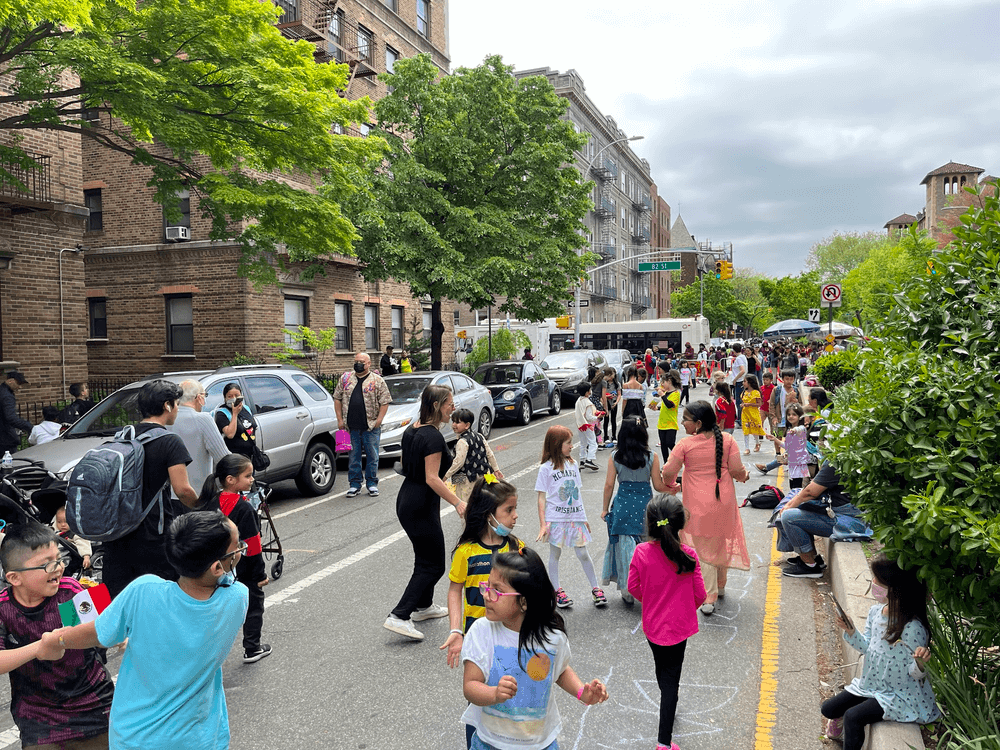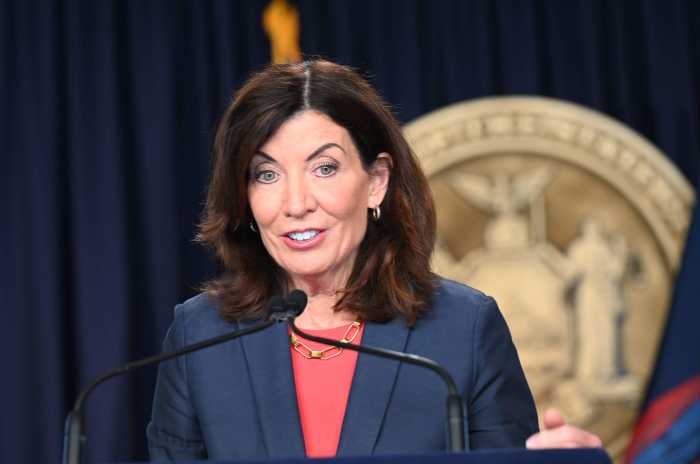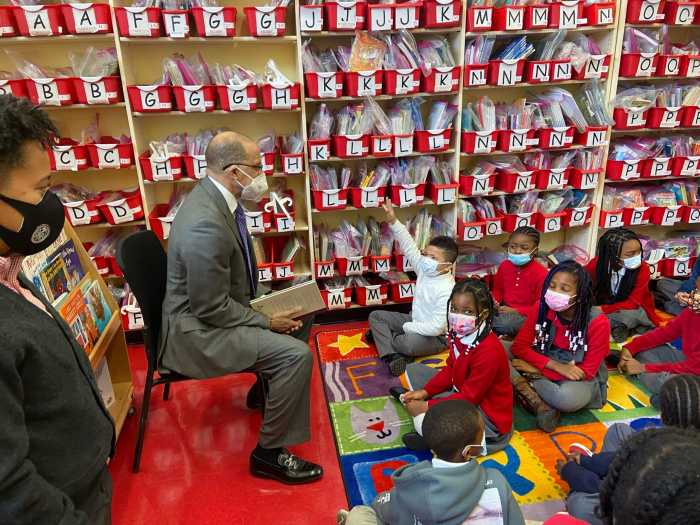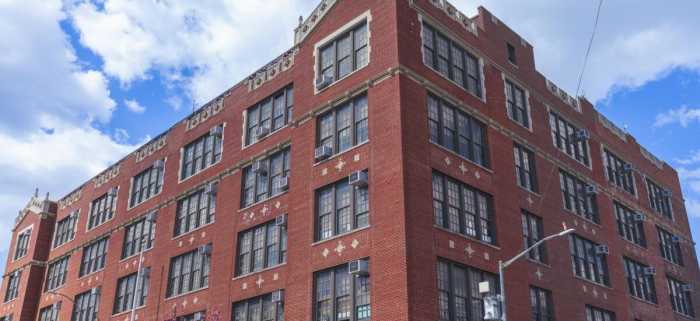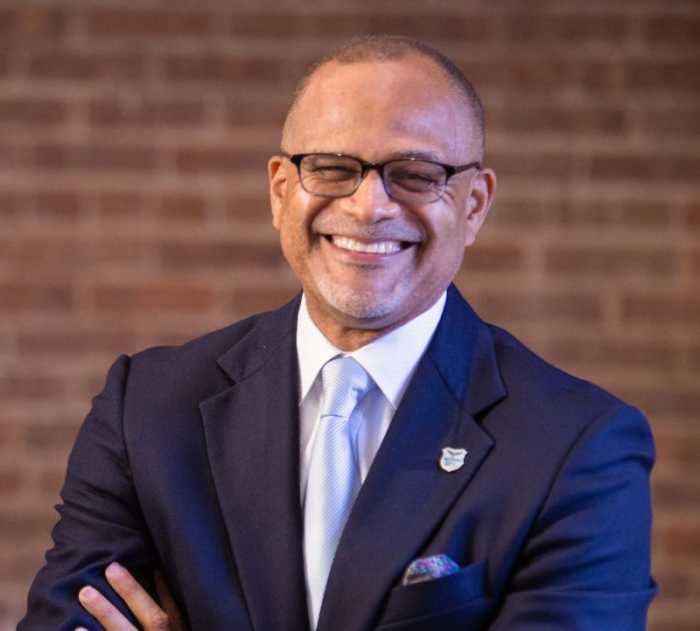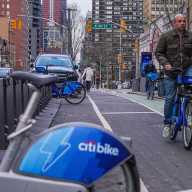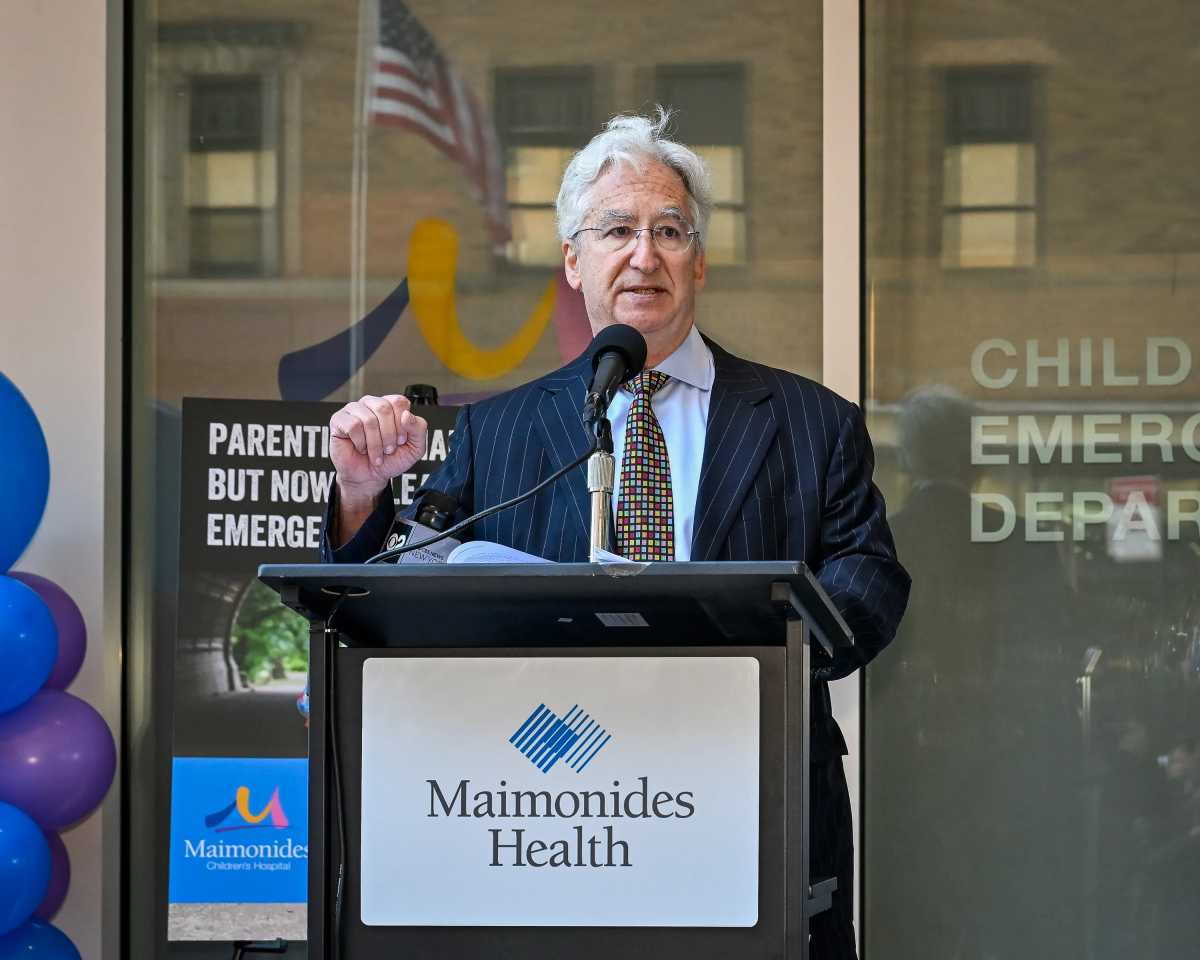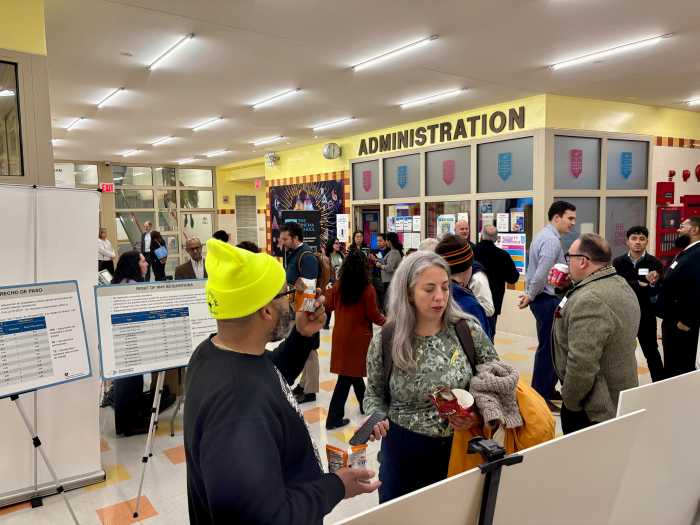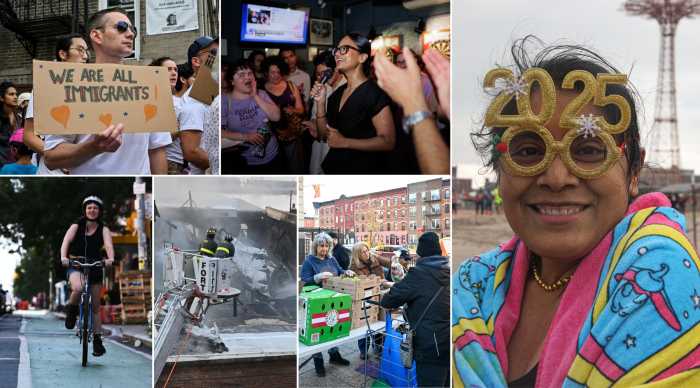In a city that’s pressed for space, public space advocates are asking people to reimagine what banning cars from streets in front of New York City schools could do for school communities.
Nuala O’Doherty-Naranjo, cofounder of the 34th Avenue Open Streets Coalition, said opening 34th Street in Jackson Heights, Queens, has paved the way for new possibilities. The coalition currently manages 26 open blocks that stretch across seven schools.
“It’s like opening a big front yard so you have a safe space for kids and people to hang out,” O’Doherty-Naranjo said. “It’s like a front porch.”
There are currently two schools, P.S. 398 and P.S. 149, along that “open” corridor that are exclusively available for school use: music classes, gym, special events, and smoother pick-ups and drop-offs for students and their parents. The streets are closed off to cars, and even bicycles, from 7 a.m. to 6 p.m.
“It works because there is a median in the middle so bikes and pedestrians can go on the other side,” O’Doherty-Naranjo said. “It’s really changing the way people are thinking about how we use the streets.”
Two nonprofits are leading the path to transform New York City streets. Open Plans and Transportation Alternatives, recently launched their Open Streets for Schools program, which is working alongside activists like O’Doherty-Naranjo and the 34th Avenue Open Streets Coalition, to organize more schools to apply for open school streets across New York City.
The pitch is convincing enough: roadways no longer dominated by cars, and more pedestrian-safe space for students and their families. But there are some barriers.
Program organizers are hoping a toolkit they created will help schools understand how to increase their chances of the New York City Department of Transportation accepting their applications. The DOT application offers three different types of open streets: Limited Local Access, Full Closure, and Full Closure for schools.
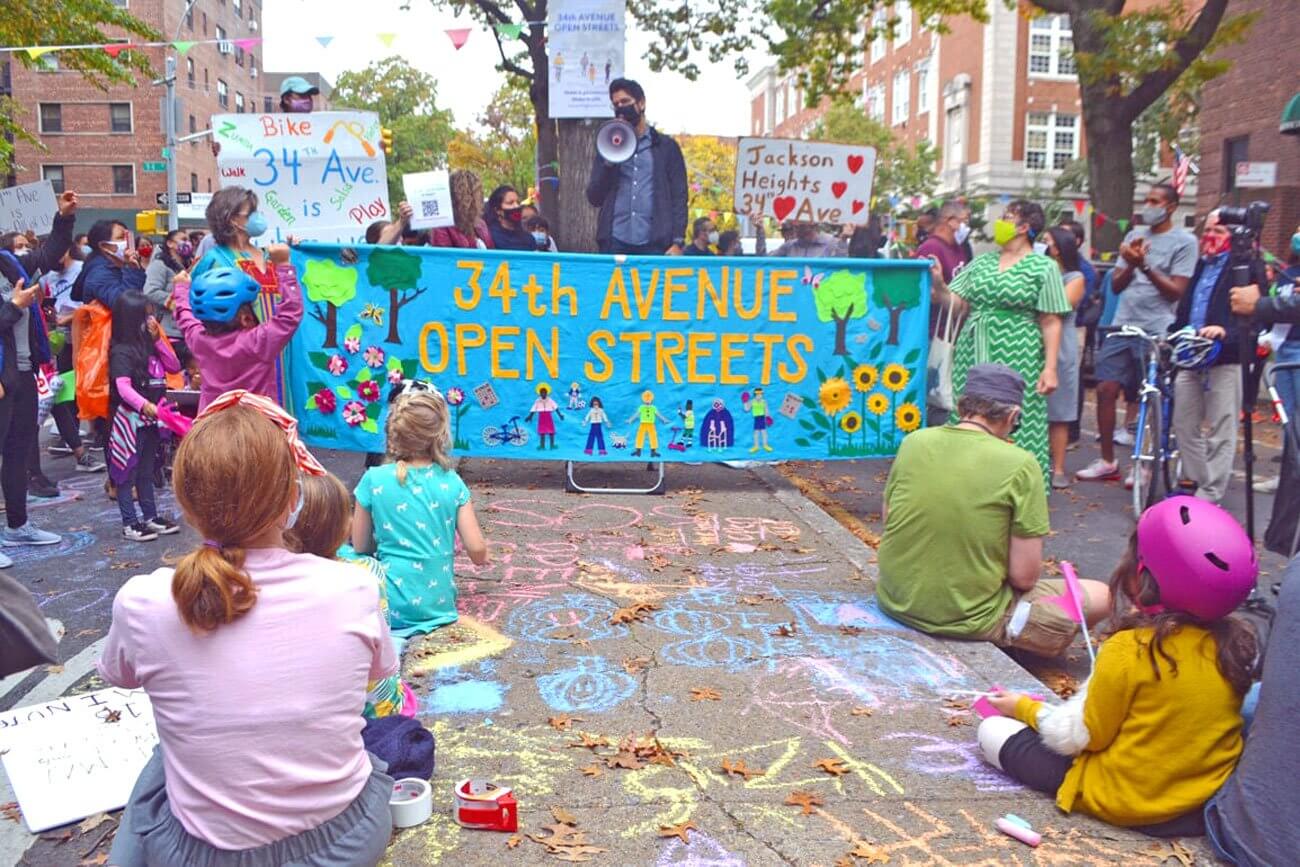
Sabina Unni, an Open Plans organizer who coordinates school streets applications, said was has been either approached by school community members or elected official staffers who were worried about dangerous, traffic-congested streets near their schools.
Out of the 100 schools Unni has reached out to, she’s successfully submitted three applications for open school streets for three schools Queens: Thomas A. Edison Career and Technical Education High School, Central Queens Academy Charter School, and P.S. 118 Lorraine Hansberry.
“These schools are great fits for the program,” Unni said. “Thomas Edison has terrible traffic and congested pick-up and drop-off in front of their school. Central Queens don’t have a gymnasium and they have 750 students. PS 118 only one crossing guard in front of three dangerous intersections.”
O’Doherty-Naranjo said she’s also working with other schools along 34th Avenue in Jackson Heights to alleviate concerns about security and public safety if more schools were to open streets for their students.
“We address those with different and extra barricades we put up to make sure no one can pass during those hours,” O’Doherty-Naranjo said. “It’s about educating the public about these streets.”
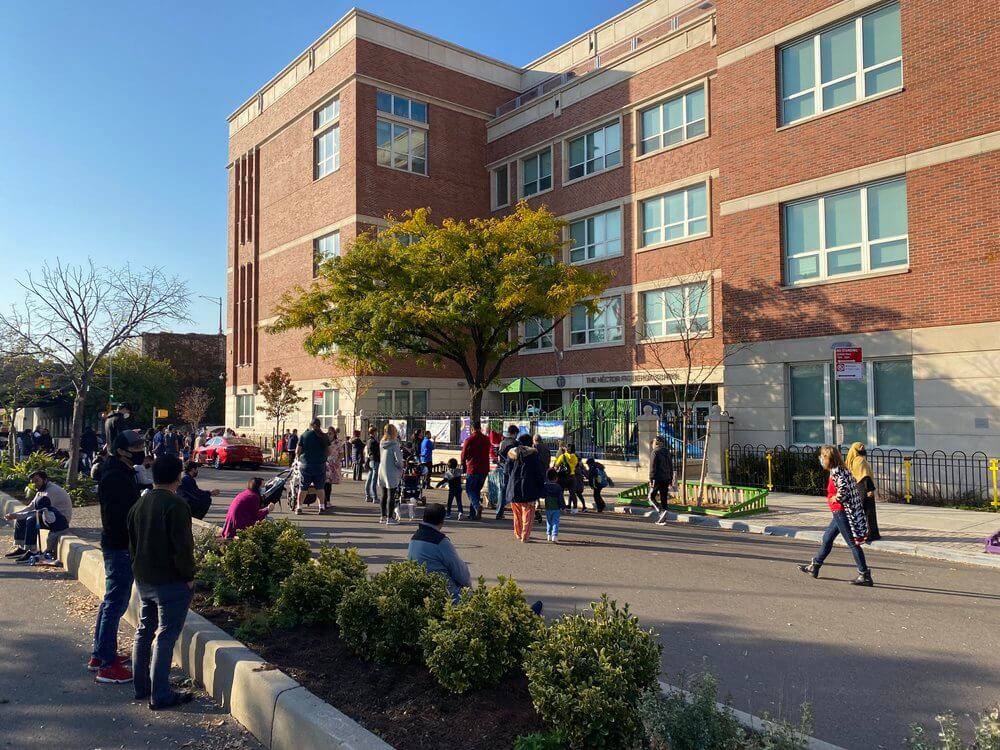
Unni said the DOT application for open school streets has been somewhat of an arduous and overwhelming task for some school administrators. The open streets, which could be any streets adjacent to the school, would need to be run, maintained, and programmed by schools and their administrators.
“It’s too high barrier entry to expect administrators to get three letter recommendations from community members and stakeholders, including the logistical ramifications that comes with that,” Unni said. “The principal needs to be okay with it to go forward.”
Funding is also an issue for some schools. Open Plans and Transportation Alternatives aren’t able to offer funding for participating or interested schools, but Unni said the New York City Department of Education or DOT could instead offer funding for open school streets.
“Funding is not a huge barrier for schools who want to use School Streets for pickup and drop-off, but those who want to use the streets for programming or classes do need to find the materials,” Unni said.
One potential reason a school’s application for open school streets could be rejected is if the requested street falls within a bus or trucking route that can’t be moved, Unni explained.
“There’s a chance they could get rejected, which would be super disappointing,” Unni said. “DOT could also be given pause if a community board or neighbors are against it.”
The next deadline for schools to submit their applications for open school streets is on April 14. Meanwhile, Unni will have to wait three months to hear back from the DOT about the applications she helped to file.
“It would be great to have open streets for them where you can play with your kids on the street, jog, or walk your dog,” Unni said. “We want to show that this an ample community resource.”



